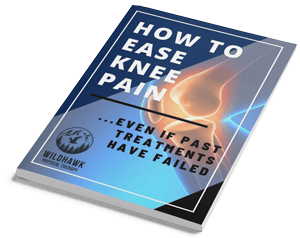
Pregnancy is a time of joy and anticipation, but it can also bring about physical discomforts, including pelvic pain. This common issue affects nearly half of pregnant women, with incidence rates ranging from 48% to 56%. The good news is that there are effective strategies on how to relieve pelvic pain during pregnancy, ensuring you feel supported during this transformative time. This guide explores the causes, solutions, and preventive measures to empower you during this transformative journey.
Is Pelvic Pain Normal During Pregnancy?
Pelvic pain is a widespread experience for expectant mothers, often caused by the body’s remarkable adaptations during pregnancy. While it can feel worrisome, understanding its prevalence and underlying causes can offer reassurance. Pelvic girdle pain can make daily activities during pregnancy difficult for women and may affect pain intensity felt during labor or birth. Pelvic pain is common, with studies showing that nearly half of pregnant women experience some degree of discomfort. For some, it may be mild and manageable, while for others, it can interfere with daily activities or even impact the intensity of pain felt during labor and birth. The physiological changes that prepare your body for childbirth often contribute to pelvic pain. Hormonal shifts, such as increased relaxin production, loosen the ligaments and joints around the pelvis. This natural adaptation creates the flexibility needed for delivery but can also lead to instability and discomfort.
Common Causes of Pelvic Pain
Pelvic pain can stem from various factors, some directly related to pregnancy’s physical and hormonal changes. Pelvic Girdle Pain (PGP) and Symphysis Pubis Dysfunction (SPD) are the leading causes of pelvic pain during pregnancy. These conditions occur when the pelvic joints become misaligned or move unevenly, causing discomfort in the lower back, hips, and pubic area. The round ligaments support the uterus, and as it grows, these ligaments stretch, causing sharp or pulling sensations in the lower abdomen and pelvis. This is a common but temporary source of discomfort.
Hormones like relaxin and progesterone loosen ligaments and joints, destabilizing the pelvis. While these changes are essential for childbirth, they often lead to pelvic instability and pain.
Effective Strategies to Relieve Pelvic Pain During Pregnancy
While pelvic pain can be challenging, incorporating targeted strategies can alleviate discomfort and improve your quality of life.
Physical Therapy and Exercise
Pelvic floor physical therapy, the least invasive treatment, can be an excellent first-line option. It is a minimally invasive and highly effective first-line approach for pelvic pain treatment during pregnancy.
At WildHawk Physical Therapy, a qualified physical therapist can design personalized exercise programs to strengthen your pelvic floor muscles, enhance stability, and alleviate discomfort. Gentle movements like pelvic tilts, squats, and cat-cow stretches are particularly beneficial, improving pelvic alignment and relieving tension. However, you must consult your therapist or doctor before beginning any new exercise regimen to ensure safety and effectiveness tailored to your unique needs.
Proper Body Mechanics and Posture

Good posture can significantly reduce pelvic pressure. Aim to keep your back straight, shoulders relaxed, and pelvis neutral while sitting, standing, or walking. To manage pelvic pain during pregnancy, simple adjustments to daily activities can make a significant difference. When sitting, choose a chair with good lumbar support to maintain proper posture, and keep your feet flat on the ground to reduce pelvic strain. While standing, distribute your weight evenly on both feet and take frequent breaks to avoid prolonged periods of pressure on your pelvis. When lifting objects, bend at the knees instead of the waist, and hold items close to your body to minimize stress on your pelvic joints and lower back. These small but impactful changes can help alleviate discomfort and support your well-being.
Supportive Devices
Maternity support belts are excellent for reducing pelvic discomfort by providing stability and support to the lower abdomen and pelvis.
Shoes with proper arch support can improve alignment and reduce pelvic strain. Avoid high heels and opt for flat, cushioned footwear.
Sleep Positions to Alleviate Pelvic Pain
Sleeping on your side, especially the left side, is highly recommended during pregnancy as it helps align your pelvis and relieve pressure. Placing a pillow between your knees further improves alignment and reduces strain on your hips and lower back. If you’re wondering how to relieve pelvic pain during pregnancy while sleeping, consider using a pregnancy pillow or wedge for added comfort. For added comfort, consider using a pregnancy pillow or wedge to support your growing belly and provide extra cushioning for your lower back, ensuring a more restful and pain-free sleep.
Pain Management Techniques
Applying a warm compress or heating pad to the pelvic area to ease pelvic pain during pregnancy can effectively soothe sore muscles and provide comfort. Alternatively, a cold pack helps reduce inflammation and numb discomfort, making it a versatile pain management option. Complement these methods with prenatal yoga and meditation, which can significantly alleviate tension and promote relaxation, offering physical and emotional relief during this transformative time.
When to Seek Professional Help
While pelvic pain during pregnancy is usually manageable with proper care, specific symptoms may require immediate medical attention. Severe or persistent pain, difficulty walking, unusual swelling, fever, or bleeding should prompt a consultation with your healthcare provider.
Identifying Concerning Symptoms
If you experience severe pain that doesn’t improve with rest or home remedies, difficulty walking or standing, or symptoms like unusual swelling, fever, or bleeding, it’s essential to seek medical attention promptly. These signs could indicate underlying complications that require immediate evaluation and treatment to ensure your and your baby’s safety and well-being.
Consulting Healthcare Providers
Your healthcare team, including obstetricians, midwives, and physical therapists, plays a vital role in managing pelvic pain. At WildHawk Physical Therapy in Asheville, NC, we offer personalized care plans tailored to your needs.
Preventive Measures for Pelvic Pain

Taking proactive steps during pregnancy can help minimize the likelihood or severity of pelvic pain. Regular physical activity, maintaining proper posture, and focusing on nutrition are effective ways to support pelvic health and overall well-being.
Prenatal Fitness Programs
Regular physical activity during pregnancy helps strengthen the muscles that support your pelvis, reducing pain and improving stability. Safe options include swimming, walking, and prenatal yoga, gentle yet effective ways to stay active.
- Swimming: Swimming is an excellent low-impact workout that supports body weight, relieves joint pressure, and reduces pelvic discomfort. It also helps improve overall muscle tone and cardiovascular health during pregnancy.
- Walking: Walking is a simple yet effective way to promote circulation, which reduces swelling and supports the body’s natural healing processes. It also strengthens muscles around the pelvis, enhancing stability and easing pain.
- Prenatal Yoga: Prenatal yoga focuses on gentle stretches and poses that enhance flexibility and improve pelvic alignment. It also helps release lower back and pelvis tension, promoting relaxation and overall comfort, which is essential for pregnancy and postpartum recovery.
Nutrition and Weight Management
Maintaining a healthy weight during pregnancy is essential to reduce strain on the pelvis and minimize discomfort. Consuming nutrients like calcium, magnesium, and omega-3 fatty acids supports joint and ligament health, promoting better pelvic stability and overall well-being.
Conclusion
Pelvic pain during pregnancy is a common but manageable issue. You can find relief and enjoy a healthier pregnancy by understanding its causes and incorporating strategies such as physical therapy, proper posture, supportive devices, and preventive measures. If pain persists or worsens, seeking professional care at WildHawk Physical Therapy can provide personalized solutions tailored to your needs.
FAQs
How do you relieve pelvic pressure?
Pelvic pressure can be alleviated by using supportive devices like maternity belts, practicing good posture, and engaging in safe exercises such as pelvic tilts. Physical therapy is also an excellent first-line treatment option.
When should I be concerned about pelvic pain during pregnancy?
If pelvic pain is severe, persistent, or accompanied by concerning symptoms such as bleeding, fever, or difficulty walking, contact your healthcare provider immediately.
What position relieves pelvic pain?
Sleeping on your side with a pillow between your knees can help align your pelvis and relieve discomfort. Elevating your legs slightly while sitting may also reduce pressure.










